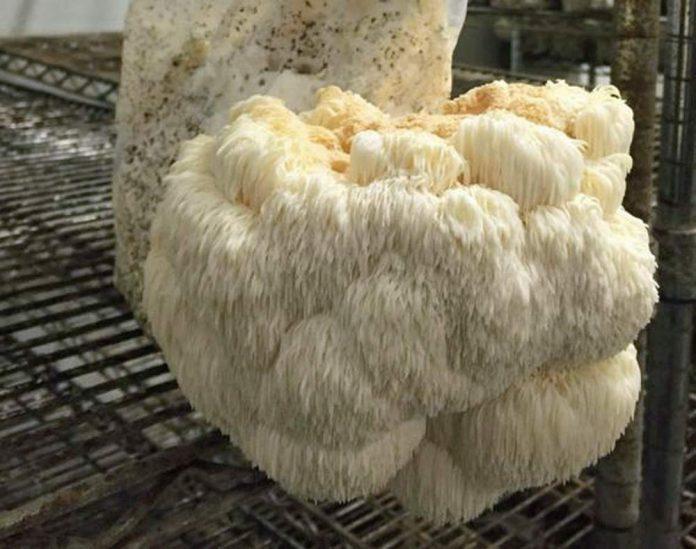Lion’s Mane mushrooms (Hericium erinaceus) have gained popularity not only for their unique appearance but also for their potential health benefits. Growing these mushrooms at home has become increasingly accessible, thanks to the availability of Lion’s Mane Mushroom Growing Kits. One common question among enthusiasts is, “How long does it take for Lion’s Mane mushrooms to grow using the kit?” This comprehensive guide aims to answer that question and provide a step-by-step approach to successfully cultivating Lion’s Mane mushrooms at home.
Understanding Lion’s Mane Mushrooms
Before delving into the growing process, it’s essential to understand the key characteristics of Lion’s Mane mushrooms. These fungi are known for their striking appearance, resembling cascading white icicles or a lion’s mane. Beyond aesthetics, Lion’s Mane mushrooms are prized for their potential cognitive and neurological benefits, making them a sought-after choice for both culinary and medicinal purposes.
The Lion’s Mane Mushroom Growing Kit
Growing Lion’s Mane mushrooms at home has become simpler with the availability of pre-packaged growing kits. These kits typically include all the necessary components, such as a substrate inoculated with Lion’s Mane mycelium, a growing bag, and sometimes a humidity tent. The growing kit serves as a convenient and beginner-friendly option for those who want to experience the joy of cultivating their mushrooms without the complexity of starting from scratch.
Step-by-Step Guide to Growing Lion’s Mane Mushrooms
Setting Up the Growing Environment
Creating the right environment is crucial for successful mushroom cultivation. Ensure a clean and sterile space, free from contaminants. Set up the growing kit in a well-lit area but away from direct sunlight, as excessive light can hinder mushroom growth.
Inoculating the Substrate
Once the environment is ready, carefully open the Lion’s Mane Mushroom Growing Kit. Inoculate the substrate by breaking up the mycelium and evenly distributing it throughout the substrate. Seal the growing bag tightly and mix the substrate thoroughly.
Incubation Period
Place the sealed growing bag in a warm and dark environment to encourage the mycelium to colonize the substrate. This incubation period typically lasts two to four weeks, during which the mycelium spreads and establishes itself.
Triggering Fruiting Conditions
After the incubation period, move the kit to a cooler environment with diffused light to initiate the fruiting stage. Mist the inside of the humidity tent if provided, ensuring the right conditions for mushroom formation.
Harvesting Lion’s Mane Mushrooms
Lion’s Mane mushrooms are ready for harvest when they reach a desirable size. Use clean scissors or a knife to cut the mushrooms at the base, avoiding damage to the mycelium. Harvesting can occur in multiple flushes over several weeks.
Factors Influencing Growth Time
Several factors can influence the time it takes for Lion’s Mane mushrooms to grow using a kit. Understanding these variables can help optimize the growing conditions and ensure a successful harvest.
Temperature
Maintaining a consistent temperature is crucial throughout the growing process. For Lion’s Mane mushrooms, the incubation period typically requires temperatures between 75-80°F (24-27°C), while the fruiting stage benefits from a cooler range of 55-65°F (13-18°C).
Humidity
Maintaining high humidity during the incubation period supports mycelium growth, while lowering humidity during the fruiting stage encourages mushroom formation. Use a hygrometer to monitor humidity levels and adjust as needed.
Light
lions mane grow kit mushrooms require light to trigger the fruiting stage, but direct sunlight can be too intense. Indirect, diffused light for 12 hours a day is generally sufficient for optimal growth.
Proper Care and Maintenance
Regularly check the growing kit for signs of contamination, and address any issues promptly. Proper care, including maintaining cleanliness and providing adequate ventilation, contributes to a healthy mushroom-growing environment.
Troubleshooting Common Issues
Despite careful cultivation, issues may arise during the growing process. Common problems include contamination, slow growth, or abnormal mushroom development. The guide addresses troubleshooting tips to help growers identify and rectify these issues.
Frequently Asked Questions
To further assist growers, this guide includes a section addressing frequently asked questions, providing additional insights into Lion’s Mane mushroom cultivation.
At Lone Star Mushrooms, our mission is simple yet profound—to provide a diverse range of high-quality mushrooms while prioritizing environmental responsibility. We believe in the magic of mushrooms not only as a culinary delight but also as a sustainable and nutritious food source.
Conclusion
Cultivating Lion’s Mane mushrooms using a growing kit offers a rewarding and educational experience. The time it takes for these mushrooms to grow can vary based on factors like temperature, humidity, and light. By following this comprehensive guide and understanding the nuances of Lion’s Mane mushroom cultivation, enthusiasts can increase their chances of a successful harvest. Whether you’re a novice or an experienced cultivator, growing Lion’s Mane mushrooms at home is a fascinating journey that connects you to the world of fungi and its many wonders.


